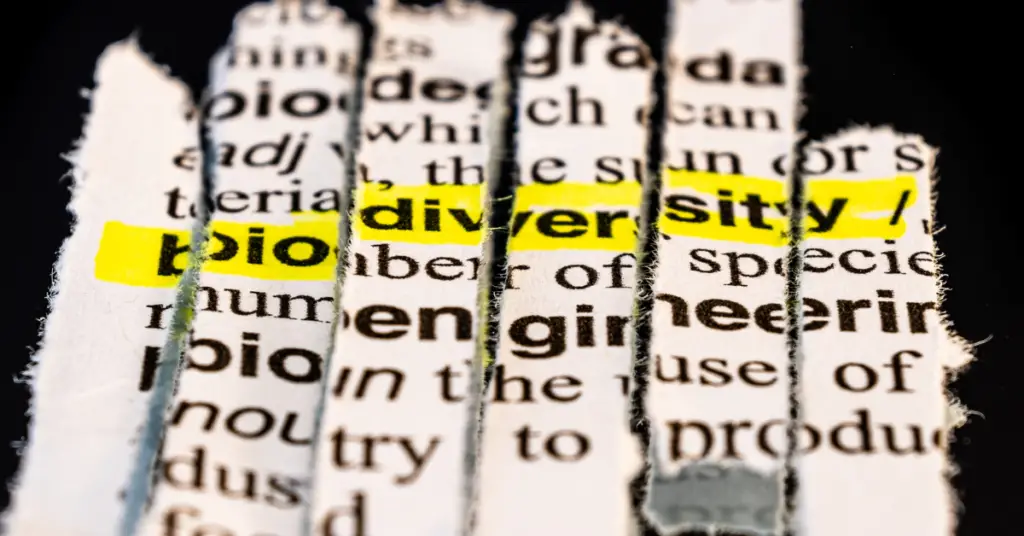A community dominated by one or two species is considered less diverse than a community in which several species have similar abundance. The Simpson’s Diversity Index is the measurement of diversity that considers the number of species present, and the relative abundance of each species.
D = (n / N)2n
As species richness and uniformity increase, diversity increases.n = the total number of organisms of a particular species N = the total number of organisms of all species The value of D varies between 0 and 1.With this index, 1 represents infinite diversity and 0 represents diversity.
To calculate the Simpson index of two areas (natural vegetation and disturbed vegetation) should be sampled using randomly or systematically placed squares. The number of plant species in each square should be recorded, as well as the number of individuals of each species.
It is not necessary to be able to identify all species, as long as they can be distinguished from each other. For example, we calculate the D value for a single square sample of soil vegetation in the Muntanyans dunes. Of course, sampling a single square would not give a reliable estimate of dune flora diversity. Multiple samples should be taken to provide a better estimate of overall diversity. The method used to optimize the sampling is the Optimum Quadrat Size technique.
Simpson’s Diversity Index is a measure of diversity. In ecology, it is often used to quantify the biodiversity of a habitat.
Biological diversity can be quantified in several ways. The two main factors taken into consideration to measure diversity are richness and uniformity. Richness is a measure of the number of different types of organisms present in a given area, species richness is the number of different species present. However, diversity depends not only on richness, but also on uniformity.
Uniformity compares the similarity in population size of each of the species present. The number of species per sample is a measure of richness. The more species there are in a sample, the “richer” the sample will be.
Species richness as a measure by itself does not take into account the number of individuals of each species present. It gives as much weight to species that have very few individuals as to those that have many.
Homogeneity is a measure of the relative abundance of the different species that make up the richness of a territory. For example, we may have sampled two different fields for wildflowers. The sample from the first field consists of 300 daisies, 335 dandelions, and 365 buttercups. The second field sample includes 20 daisies, 49 dandelions, and 931 buttercups. The two samples have the same richness (3 species) and the same total number of individuals (1000). However, the first sample has greater uniformity than the second. Indeed, the total number of individuals in the sample is fairly evenly distributed between the three species. In the second sample, most individuals are buttercups, with only a few daisies and dandelions present. Sample 2 is therefore considered less diverse than sample 1.
Simpson’s Reciprocal Index 1 / D
The value of this index starts with 1 as the smallest possible number. This number would represent a community containing only one species. The higher the value, the greater the variety. The maximum is the number of species (or other category used) in the sample. For example, if the sample contains five species, the maximum value is 5.

Erzsebet Frey (Eli Frey) is an ecologist and online entrepreneur with a Master of Science in Ecology from the University of Belgrade. Originally from Serbia, she has lived in Sri Lanka since 2017. Eli has worked internationally in countries like Oman, Brazil, Germany, and Sri Lanka. In 2018, she expanded into SEO and blogging, completing courses from UC Davis and Edinburgh. Eli has founded multiple websites focused on biology, ecology, environmental science, sustainable and simple living, and outdoor activities. She enjoys creating nature and simple living videos on YouTube and participates in speleology, diving, and hiking.

